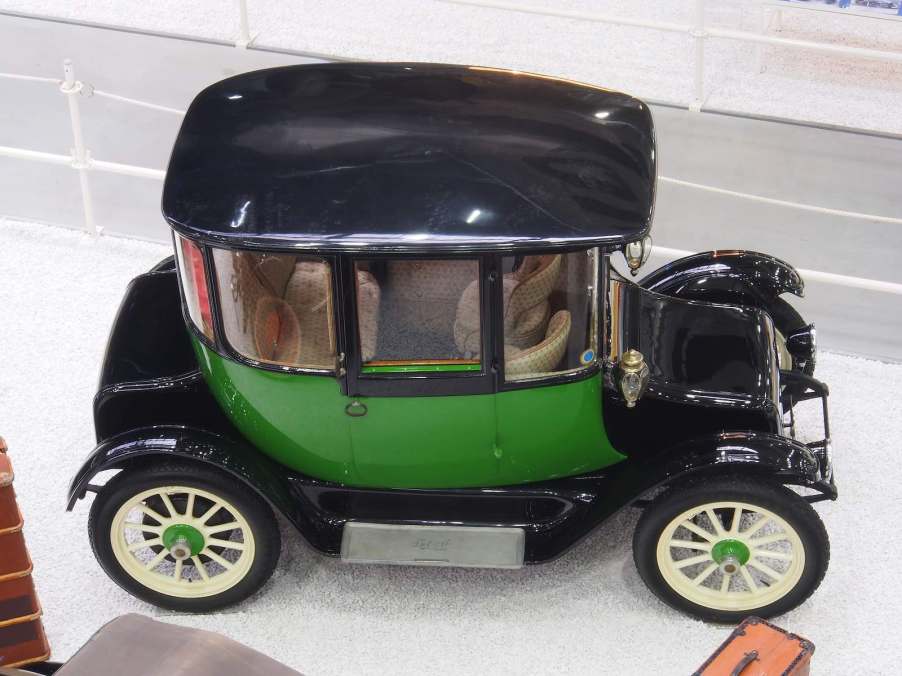
Meet the ‘Detroit Electric,’ a 100-Year-Old EV Coupe Henry Ford’s Wife Steered From the Back Seat
One hundred years ago, electric cars seemed as promising a technology as the overly-complex internal combustion vehicles of the day. In fact, when gas prices soared during WWI, EV sales in cities were bumping. In this promising market, a new EV startup made a splash: Detroit Electric.
Today, this name conjures up images of the Movement electronic music festival in downtown Detroit. But from 1907 to 1939, it was a luxury division of the Anderson Electric Car Company. This brand built 13,000 electric luxury vehicles. Some for famous customers such as Clara Ford.
By the early 1920s, you could by a Ford Model T (introduced in 1908) for $370. That’s $5,300 adjusted for inflation. And before you comment on that price, know that you were getting a rig with a top speed of 40 mph (maybe) that was a pain to shift, took expertise to start, took luck to stop, and could break your hand if it backfired while you were hand cranking.
In those days, many electric automakers targeted female drivers. Rich female drivers. The 1922 Detroit Electric Model 90 Coupe in the Henry Ford Museum had a $2,985 MSRP but was optioned to almost $4,000. That would be $61,500 today.

So what could Clara Ford get at those prices? An opulent coupe with an interior fashioned after a Victorian sitting room. It had curved windows. And a flower vase!
Today, “backseat driver” is a phrase that refers to a bossy passenger. But Detroit Electric took it seriously. The Model 90 had a plush forward-facing loveseat for the driver and a passenger. In front of this bench were two pivoting seats or stools for additional passengers.
How did you drive it? Hit the “on” switch, fold down the tiller (yes, the steering tiller), fold down the hand accelerator and set it to one of four speeds. Then off you went. Apparently, with the accelerator at top speed it can really launch. Good thing its couch-seat is plush.
Other controls included a reverse pedal at the base of the couch-seat and a brake pedal just ahead of that has settings for stopping and a parking brake.
So what about the lack of visibility and trying to steer from the rear seat with a tiller? It helps that the little coupe’s top speed is 25 mph. In the days before shock absorbers, anti-sway bars, and hydraulic brakes you might not have wanted to go faster. Detroit Electric advertised a 80 mile range, with the optional Edison nickel-iron battery.
See what it is like to drive the Detroit Electric in the video below:



